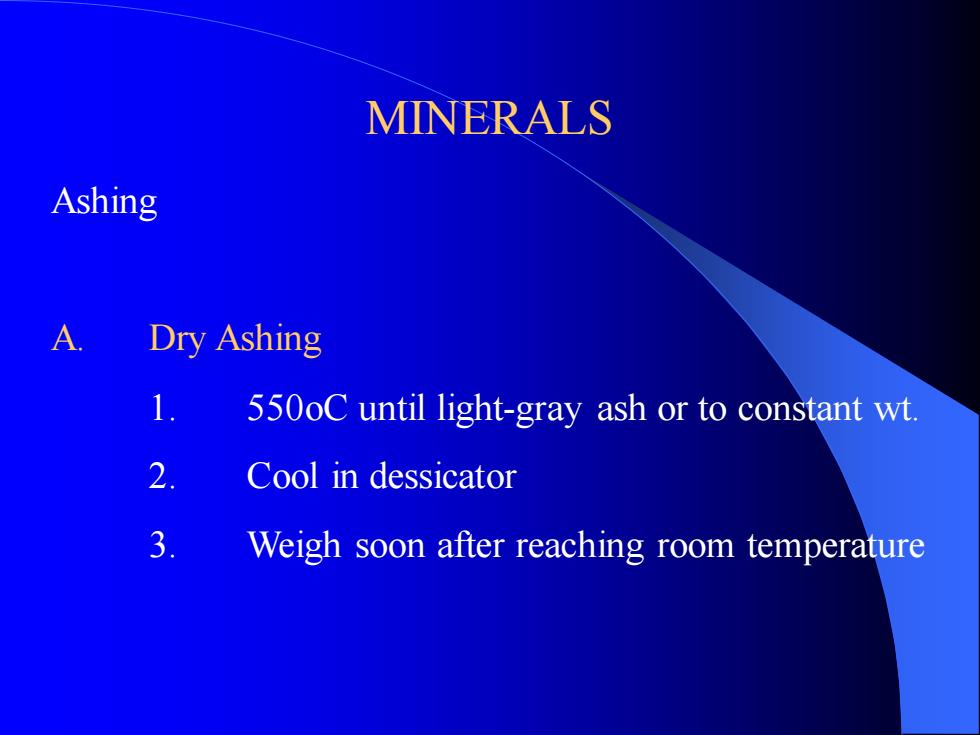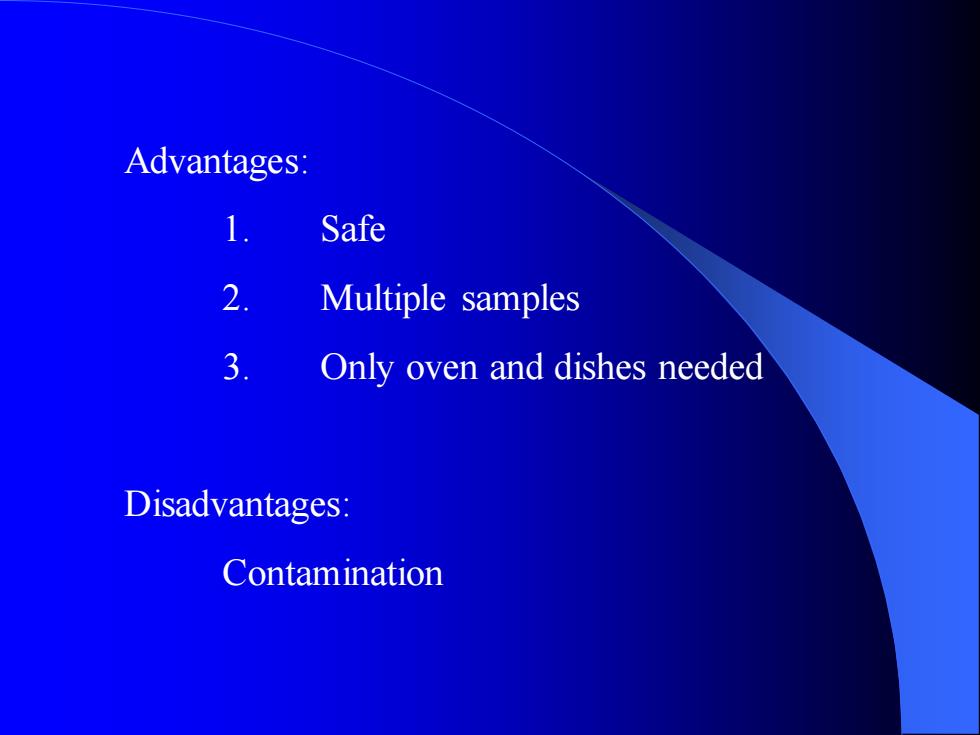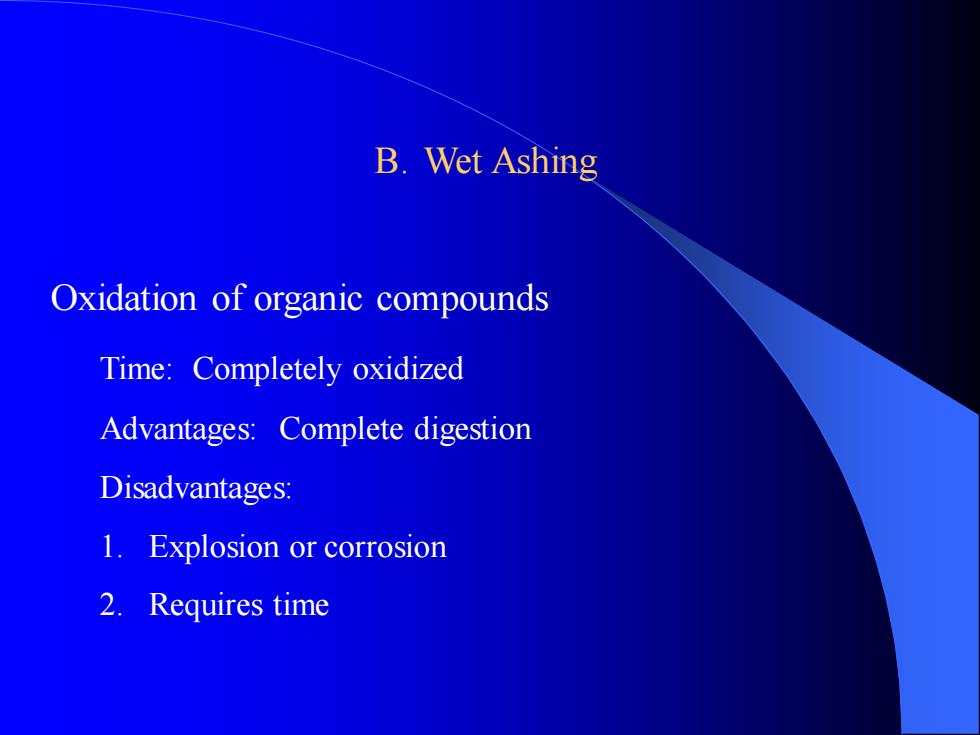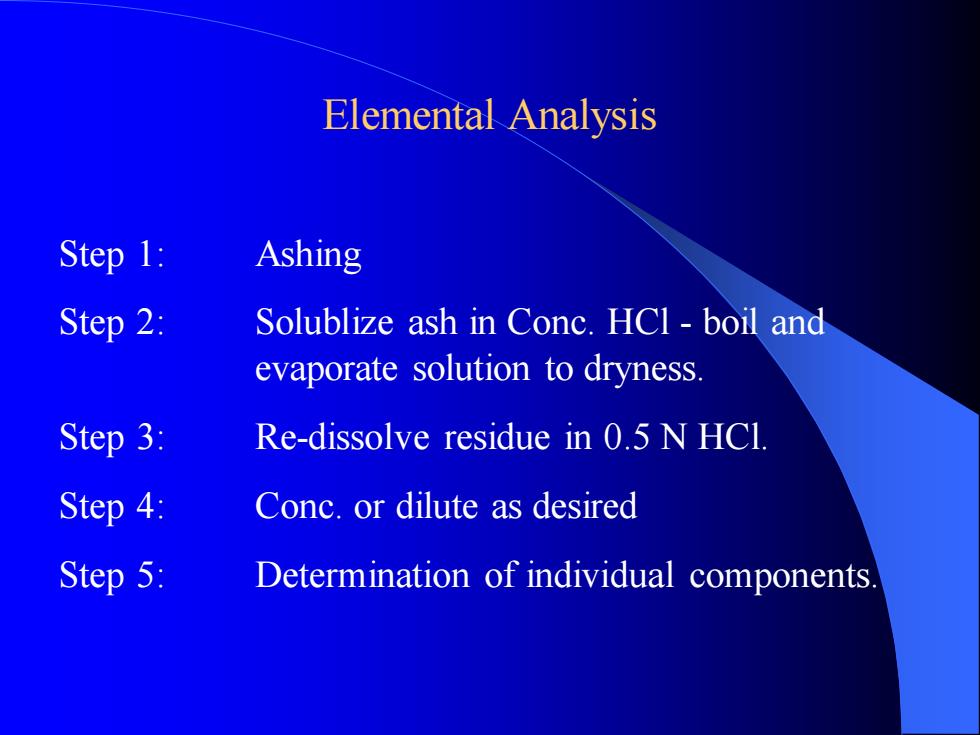
MINERALS Ashing A. Dry Ashing 1. 550oC until light-gray ash or to constant wt. 2. Cool in dessicator 3. Weigh soon after reaching room temperature
MINERALS Ashing A. Dry Ashing 1. 550oC until light-gray ash or to constant wt. 2. Cool in dessicator 3. Weigh soon after reaching room temperature

Advantages: 1. Safe 2. Multiple samples 3. Only oven and dishes needed Disadvantages: Contamination
Advantages: 1. Safe 2. Multiple samples 3. Only oven and dishes needed Disadvantages: Contamination

B. Wet Ashing Oxidation of organic compounds Time: Completely oxidized Advantages: Complete digestion Disadvantages: 1. Explosion or corrosion 2. Requires time
B. Wet Ashing Oxidation of organic compounds Time: Completely oxidized Advantages: Complete digestion Disadvantages: 1. Explosion or corrosion 2. Requires time

Step 1: Ashing Step 2: Solublize ash in Conc. HCl - boil and evaporate solution to dryness. Step 3: Re-dissolve residue in 0.5 N HCl. Step 4: Conc. or dilute as desired Step 5: Determination of individual components. Elemental Analysis
Step 1: Ashing Step 2: Solublize ash in Conc. HCl - boil and evaporate solution to dryness. Step 3: Re-dissolve residue in 0.5 N HCl. Step 4: Conc. or dilute as desired Step 5: Determination of individual components. Elemental Analysis

1. Spectrometric Methods 2. Emission Spectroscopy - Flame Photometry Method 3. Atomic Absorption Spectrometry METHODS FOR DETERMINING MINERAL CONSTITUENTS
1. Spectrometric Methods 2. Emission Spectroscopy - Flame Photometry Method 3. Atomic Absorption Spectrometry METHODS FOR DETERMINING MINERAL CONSTITUENTS